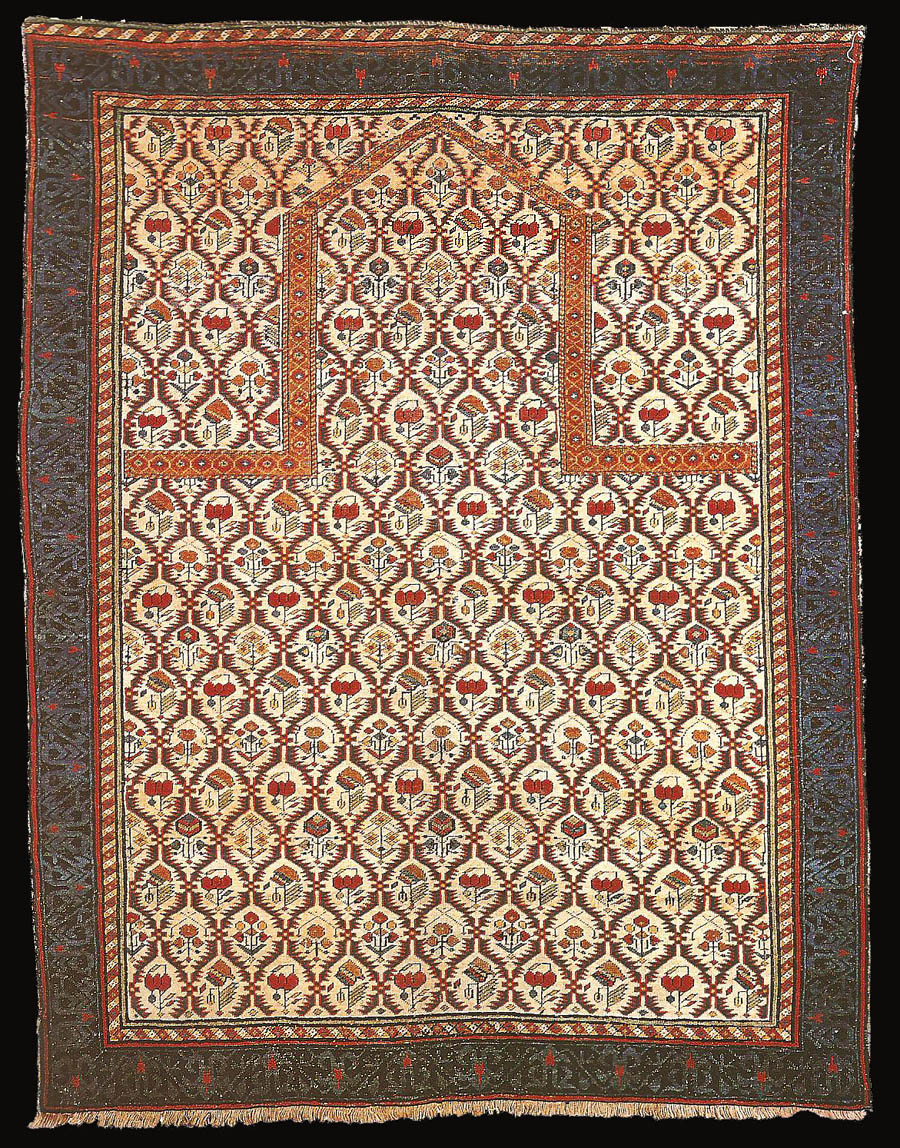|
Plate no: 43
KUBA
early 19th century
1.06 x 1.36m (3'6" X 4'5")
It is quite closely related to the Schürmann example
cited above and to an example illustrated as plate 25 in Orient Stars and
sold at Sotheby's, New York in 1992. Hali described
the latter as a very beautiful rug with excellent colours and well-drawn
flowers, very finely knotted on wool warps and cotton wefts. Although Schürmann
and Sotheby's attribute their examples to Shirvan, current scholarship would
suggest Kuba as the proper origin for these pieces.
The rug in plate 42 is
virtually identical to an example published in Burns, The Caucasus:
Traditions in Weaving (plate 28). From an Italian private collection, it was
previously published in John Eskenazi's Vane del tappeto orientate (plate
141). Like other ivory-lattice pieces in this group it features minor
borders composed of a repeat pattern of small diamonds of alternating
colours, creating an illusion of oblique stripes. Dark-lattice Kubas, on the
other band, generally feature very finely drawn medachyl guard borders, as
in plate 42 shown here.
Published at Ralph Kaffel's Caucasian Prayer Rugs
 |

